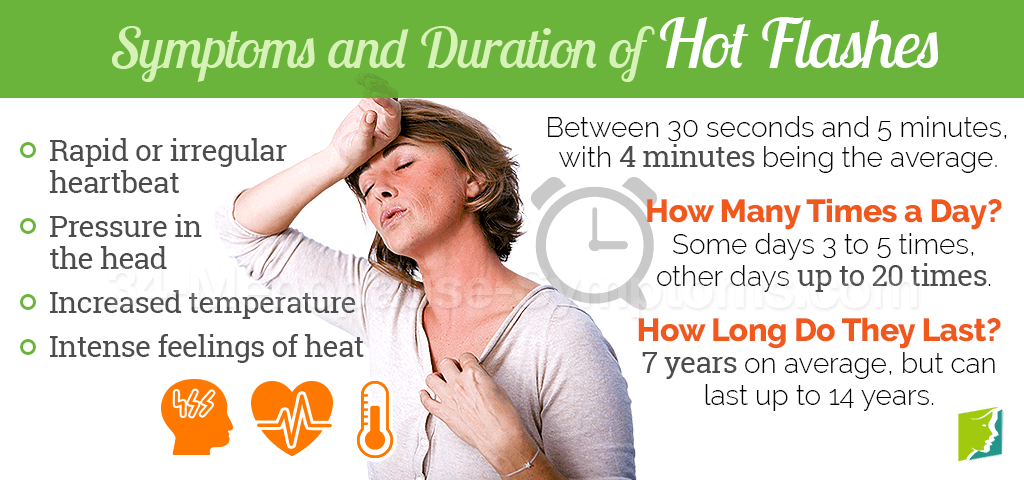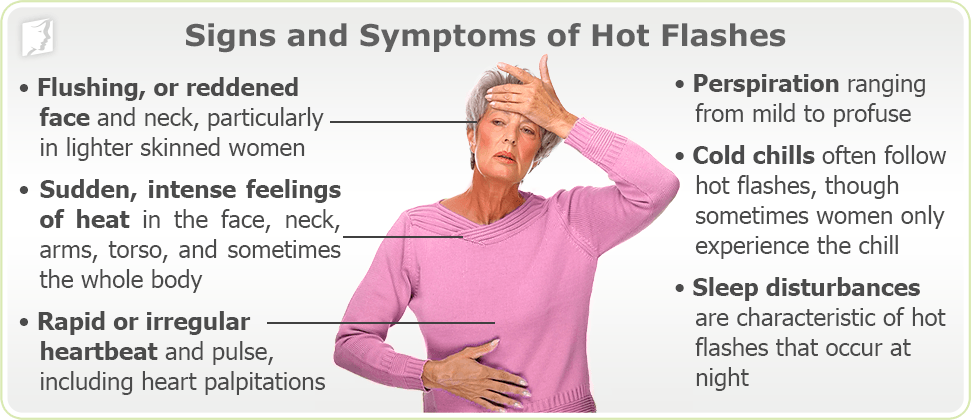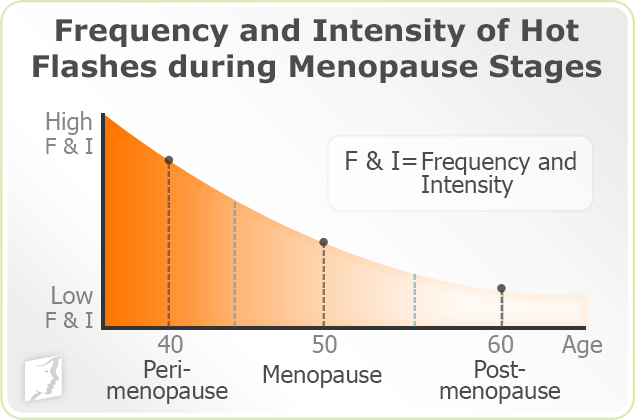Did you know?
Studies have shown that between 50 and 75% of women taking tamoxifen reported hot flashes, compared to 25 - 50% who took a placebo.
Hot flashes are one of the most common symptoms experienced by women around the time of menopause. In fact, approximately half of all perimenopausal women and 75 - 85% of all postmenopausal women experience hot flashes. The episodes can be anxiety-inducing if they are unexpected, but with knowledge, they can be faced with confidence.
While the onset, duration, frequency, and severity of hot flashes varies greatly between women, episodes often begin in the years before a woman's last period and can last anywhere from six months to 10 years.
Continue reading to learn more about hot flashes, as well as their symptoms and risk factors.
What Are Hot Flashes?
Hot flashes, also referred to as "hot flushes" in British English, are a vasomotor symptom of menopause. This means that hot flashes and the ensuing heat, perspiration, and other symptoms arise from temporary changes in blood vessel size and shape. Some women experience an "aura" or feeling of uneasiness right before the hot flash that alerts them as to what's coming.
Hot flashes can occur at any time of the day or night, though they are often called night sweats when they happen during sleep. Episodes can last anywhere from a few seconds to a few minutes, though it can take up to 30 minutes for a woman to feel back to normal following an episode. The frequency also varies; some women experience them periodically, while others face these episodes up to 20 times per day.

Signs and Symptoms of Hot Flashes
Women with menopause-related hot flashes will usually experience a consistent and unique pattern of symptoms with each episode. Some women have only mild symptoms infrequently, whereas others suffer more severe symptoms multiple times each day.
The following are the most common signs and symptoms of hot flashes:

While each woman will experience the symptoms of hot flashes in a pattern that is unique to her, some women are at a greater risk for more severe and prolonged hot flashes. Keep reading to learn more about the risk factors for hot flashes.
Risk Factors
Certain medical conditions can cause more intense and longer-lasting hot flashes in menopausal women.
For example, women taking the breast cancer treatment drug tamoxifen may experience more severe and prolonged hot flashes, especially in those who have not yet adjusted to the medication. In some rare instances, this drug can delay hot flashes, acting like estrogen to combat this symptom. However, in such cases, hot flashes typically develop once tamoxifen is no longer taken.

Additionally, women who go through premature menopause or surgical menopause often suffer more frequent and more serious hot flashes, in part because of the abruptness at which the onset of menopause occurs.
Along with these risk factors, certain behaviors and lifestyle choices - such as consuming spicy foods, using saunas, and smoking - may also trigger or intensify hot flashes. See managing hot flashes to learn how to avoid these triggers.
Now that the basics have been covered, continue reading to better understand the causes of hot flashes in menopausal women.
Sources
- "Hot flashes ... in January". Canadian Medical Association Journal. 2004: 170 (1).
- Miller, Heather and Rose Maria Li, M.D. "Measuring Hot Flashes: Summary of a National Institutes of Health Workshop". Conference report. Mayo Clinic. June 2004: 79.
- Sikon, Andrea and Holly Thacker M.D. "Treatment for Menopausal Hot Flashes". Cleveland Clinic Journal of Medicine. July 2004: 71 (7).



